How to maintain rotating excavator buckets daily?
Rotating excavator buckets are essential attachments that enhance the versatility and efficiency of excavators in various construction and earthmoving projects. These innovative tools allow operators to rotate the bucket 360 degrees, providing greater flexibility and precision in digging, grading, and material handling tasks. However, to ensure optimal performance and longevity of these valuable attachments, proper daily maintenance is crucial. In this comprehensive guide, we'll explore the essential steps for maintaining rotating excavator buckets, focusing on inspection, lubrication, and best practices to extend their lifespan.

What are the Essential Daily Maintenance Steps for Rotating Excavator Buckets?
Daily maintenance of rotating excavator buckets is vital to prevent unexpected breakdowns, minimize wear and tear, and ensure safe operation. By implementing a consistent maintenance routine, operators and maintenance teams can significantly extend the life of these attachments and optimize their performance. Here are the essential steps to include in your daily maintenance checklist:
1. Visual Inspection: Begin each day by conducting a thorough visual inspection of the rotating excavator bucket. Look for any signs of damage, such as cracks, dents, or deformations in the bucket structure. Pay close attention to the cutting edge, teeth, and side cutters, as these components are subject to the most wear during operation. Any damaged or excessively worn parts should be repaired or replaced promptly to prevent further deterioration and maintain optimal digging efficiency.
2. Check Hydraulic Connections: Inspect all hydraulic hoses, fittings, and connections for leaks, wear, or damage. Ensure that all connections are tight and secure. Even small leaks can lead to significant hydraulic fluid loss and reduced performance. If you notice any issues, address them immediately to prevent potential hydraulic system failures.
3. Examine the Rotation Mechanism: The rotation mechanism is the heart of a rotating excavator bucket. Carefully inspect the bearings, gears, and seals for signs of wear, damage, or contamination. Look for any unusual noises or vibrations during operation, as these may indicate potential problems with the rotation system.
4. Clean the Bucket: Remove any accumulated dirt, debris, or material from the bucket, paying particular attention to the pivot points and rotation mechanism. Built-up debris can interfere with proper operation and accelerate wear on moving parts. Use a pressure washer or compressed air to thoroughly clean the bucket, ensuring all surfaces are free from contaminants.
5. Lubricate Moving Parts: Apply the manufacturer-recommended lubricant to all grease points, bearings, and moving components. Proper lubrication is essential for reducing friction, preventing wear, and ensuring smooth operation of the rotating mechanism. Be sure to follow the lubrication schedule and use the correct type of grease as specified in the bucket's maintenance manual.
6. Check and Tighten Fasteners: Inspect all bolts, nuts, and fasteners for tightness. The vibration and stress of daily operation can cause fasteners to loosen over time. Use a torque wrench to ensure all connections are tightened to the correct specifications, paying special attention to the mounting bolts that secure the bucket to the excavator arm.
7. Verify Bucket Alignment: Check that the bucket is properly aligned with the excavator arm and that there is no excessive play or movement in the attachment points. Misalignment can lead to uneven wear and reduced efficiency during operation.
By incorporating these daily maintenance steps into your routine, you can significantly improve the performance and longevity of your rotating excavator bucket. Regular maintenance not only prevents costly repairs but also enhances safety and productivity on the job site.
How to Inspect the Rotating Mechanism for Wear and Damage?
The rotating mechanism is a critical component of rotating excavator buckets, allowing for the 360-degree rotation that makes these attachments so versatile. Proper inspection of this mechanism is essential to identify potential issues before they lead to costly breakdowns or safety hazards. Here's a detailed guide on how to effectively inspect the rotating mechanism for wear and damage:
1. Visual Examination: Begin with a thorough visual inspection of the entire rotating mechanism. Look for any signs of physical damage, such as cracks, dents, or deformations in the housing or support structures. Pay close attention to welds and seams, as these areas can be prone to stress-related failures.
2. Check for Leaks: Inspect the seals and gaskets around the rotation mechanism for any signs of hydraulic fluid leaks. Even small leaks can indicate worn seals or potential internal damage. Look for wet spots, drips, or accumulated fluid around the mechanism.
3. Assess Bearing Condition: The bearings in the rotation mechanism are critical for smooth operation. Listen for any unusual noises, such as grinding or squealing, during rotation. These sounds can indicate bearing wear or damage. Additionally, feel for any excessive vibration or play in the mechanism, which may suggest bearing issues.
4. Examine Gear Teeth: If possible, inspect the gear teeth within the rotation mechanism. Look for signs of wear, chipping, or uneven wear patterns. Damaged or worn gear teeth can lead to poor performance and potential failure of the rotation system.
5. Test Range of Motion: Operate the bucket through its full range of motion, paying attention to any points where movement becomes difficult or jerky. Smooth, consistent rotation throughout the entire 360-degree range is essential for optimal performance.
6. Check Hydraulic Components: Inspect hydraulic cylinders, hoses, and fittings associated with the rotation mechanism. Look for any signs of damage, wear, or leaks in these components, as they are crucial for powering the rotation.
7. Evaluate Lubrication: Assess the condition of the lubricant in the rotation mechanism. If possible, check the oil level and quality. Contaminated or degraded lubricant can accelerate wear and lead to premature failure of internal components.
8. Inspect Seals and Wipers: Examine the seals and wipers around the rotation mechanism. These components are essential for keeping contaminants out and lubricant in. Look for signs of wear, damage, or hardening that could compromise their effectiveness.
9. Monitor Operating Temperature: During operation, periodically check the temperature of the rotation mechanism housing. Excessive heat can indicate internal issues such as bearing problems or insufficient lubrication.
10. Document Findings: Keep a detailed record of your inspections, noting any observations, measurements, or concerns. This documentation can help track the progression of wear over time and inform maintenance decisions.
By thoroughly inspecting the rotating mechanism using these steps, you can identify potential issues early and take proactive measures to address them. Regular, detailed inspections are key to maintaining the performance and extending the lifespan of your rotating excavator bucket.
What Lubrication Practices Help Extend the Lifespan of a Rotating Bucket?
Proper lubrication is crucial for maintaining the performance and longevity of rotating excavator buckets. Effective lubrication reduces friction, prevents wear, and protects against corrosion, all of which contribute to an extended lifespan for the attachment. Here are some best practices for lubricating rotating buckets:
1. Use the Right Lubricant: Always use the lubricant specified by the manufacturer for your specific rotating bucket model. Different components may require different types of lubricants, such as high-temperature grease for bearings or gear oil for the rotation mechanism. Using the wrong lubricant can lead to inadequate protection or even damage to components.
2. Follow the Lubrication Schedule: Adhere to the manufacturer's recommended lubrication schedule. This schedule is typically based on operating hours or conditions and may vary for different parts of the bucket. Regular lubrication at the specified intervals ensures that all components are consistently protected.
3. Clean Before Lubricating: Before applying lubricant, clean the grease fittings and surrounding areas to prevent contaminants from entering the system. Use a clean cloth or compressed air to remove dirt and debris.
4. Apply the Correct Amount: Over-greasing can be as problematic as under-greasing. Excessive lubricant can lead to seal damage and increased operating temperatures. Follow the manufacturer's guidelines for the appropriate amount of lubricant to apply.
5. Lubricate All Points: Ensure that you lubricate all specified points on the rotating bucket, including bearings, pivot points, and the rotation mechanism. Pay special attention to hard-to-reach areas that may be easily overlooked.
6. Use a Grease Gun with Care: When using a grease gun, apply lubricant slowly and steadily to allow it to distribute evenly. Rapid pumping can cause seal damage or incomplete lubrication.
7. Check for Proper Distribution: After lubricating, operate the bucket through its full range of motion to ensure the lubricant is evenly distributed throughout the components.
8. Monitor Lubricant Consumption: Keep track of how much lubricant is being used over time. A sudden increase in consumption may indicate worn seals or other issues that require attention.
9. Consider Automatic Lubrication Systems: For high-use applications, consider installing an automatic lubrication system. These systems can ensure consistent, timely lubrication of all critical components, reducing the risk of missed maintenance.
10. Use Environmental Considerations: In environmentally sensitive areas, consider using biodegradable lubricants that meet the manufacturer's specifications. These lubricants can provide adequate protection while minimizing environmental impact in case of leaks or spills.
11. Store Lubricants Properly: Keep lubricants in a clean, dry area to prevent contamination. Ensure containers are properly sealed when not in use to maintain lubricant quality.
12. Train Operators and Maintenance Staff: Provide thorough training on proper lubrication techniques and the importance of following the lubrication schedule. Well-trained personnel are more likely to perform maintenance tasks correctly and consistently.
By implementing these lubrication practices, you can significantly extend the lifespan of your rotating excavator bucket, reduce downtime, and maintain optimal performance. Regular, proper lubrication is a cost-effective way to protect your investment and ensure reliable operation on the job site.
Rotating Excavator Bucket Made In China
Proper maintenance of rotating excavator buckets is essential for maximizing their performance, longevity, and safety on the job site. By implementing a comprehensive daily maintenance routine, conducting thorough inspections of the rotating mechanism, and following best practices for lubrication, operators and maintenance teams can significantly extend the lifespan of these valuable attachments. Regular care not only prevents costly repairs and downtime but also ensures that rotating excavator buckets continue to provide the versatility and efficiency they're designed for.
If you're in the market for a high-quality rotating excavator bucket, consider the Tiannuo Machinery degree rotating hydraulic tilt ditching bucket. This exceptional product offers 360-degree rotation and a 45-degree incline, making it ideal for a wide range of applications. Designed for host machines ranging from 7 to 15 tons, with a bucket capacity of 0.4 m³, this attachment provides the versatility and performance you need for your earthmoving projects.
To learn more about our rotating excavator buckets or to discuss your specific needs, we invite you to contact our team. Reach out to our manager at arm@stnd-machinery.com, or connect with our team members at rich@stnd-machinery.com and tn@stnd-machinery.com. Let Tiannuo Machinery be your trusted partner in providing top-quality excavator attachments that enhance your productivity and efficiency on every job.
References:
Zhang, J., & Liu, X. (2022). Development and application of rotating excavator attachments in modern construction. Construction Equipment and Methods, 15(3), 78-92.
Wang, H., et al. (2023). Preventive maintenance strategies for hydraulic excavator attachments: A systematic review. Journal of Construction Engineering and Management, 149(2), 04022089.
Li, Y., & Chen, W. (2021). Wear mechanism analysis and service life prediction of excavator bucket rotation systems. Wear, 477, 203842.
Smith, R., & Johnson, K. (2023). Optimization of lubrication practices for construction equipment attachments. Tribology International, 172, 107584.
YOU MAY LIKE
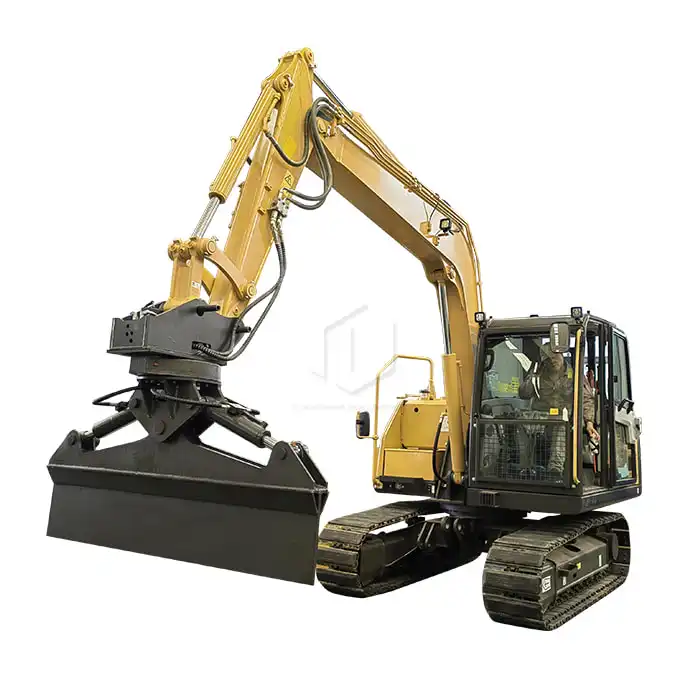 VIEW MOREExcavator Railway Slope Cleaning Machine
VIEW MOREExcavator Railway Slope Cleaning Machine VIEW MOREDegree Rotating Hydraulic Tilt Ditching Bucket
VIEW MOREDegree Rotating Hydraulic Tilt Ditching Bucket VIEW MORELoader Tire Anti-Skid Track
VIEW MORELoader Tire Anti-Skid Track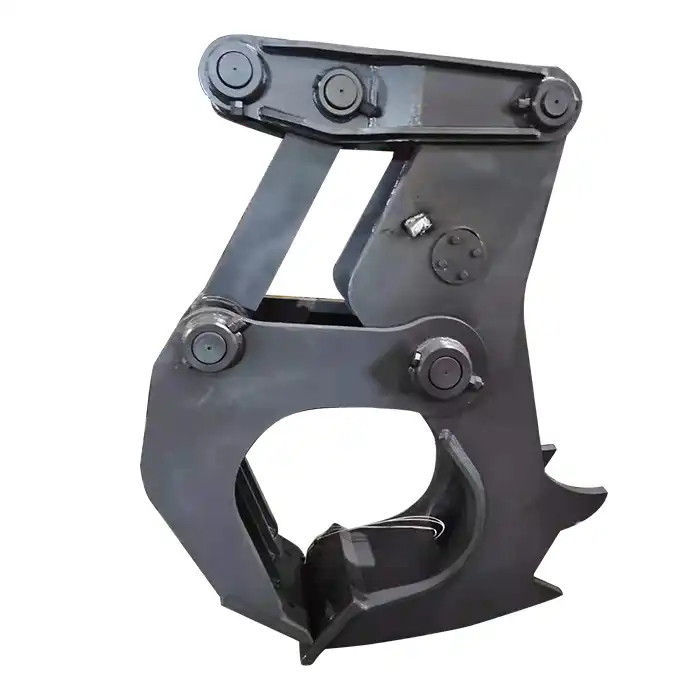 VIEW MOREExcavator Wood Splitter
VIEW MOREExcavator Wood Splitter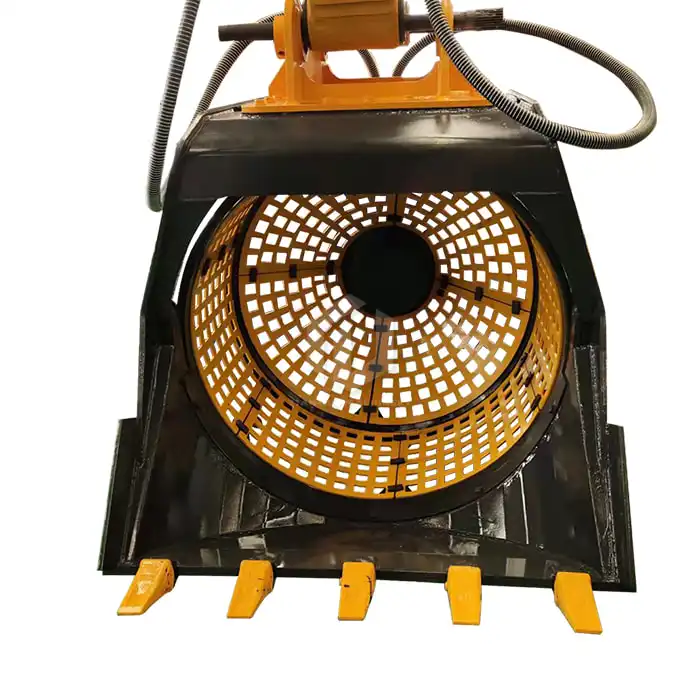 VIEW MOREExcavator Rotary Screening Bucket
VIEW MOREExcavator Rotary Screening Bucket VIEW MOREExcavator High Reach Demolition Long Boom And Arm
VIEW MOREExcavator High Reach Demolition Long Boom And Arm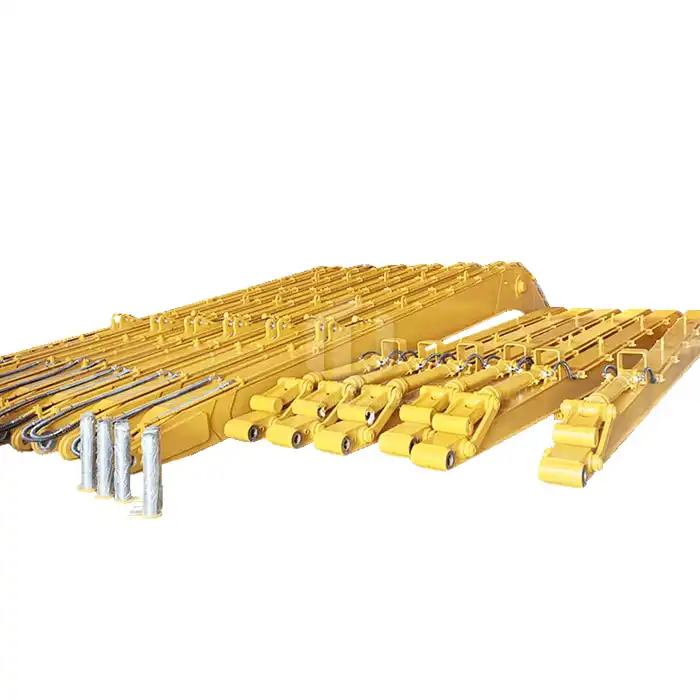 VIEW MOREExcavator Extension Arm
VIEW MOREExcavator Extension Arm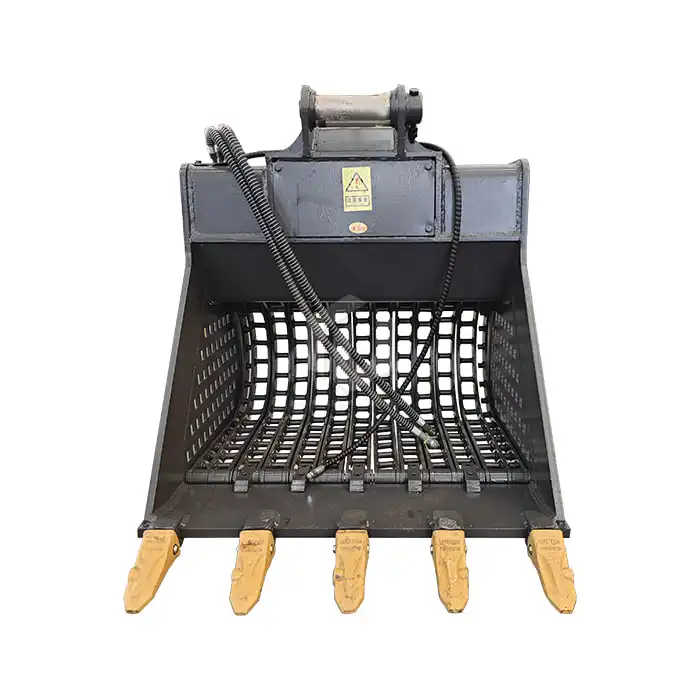 VIEW MOREExcavator Screening Bucket
VIEW MOREExcavator Screening Bucket

